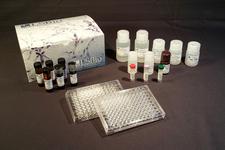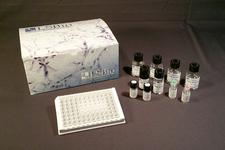order histories, retained contact details for faster checkout, review submissions, and special promotions.
Forgot password?
order histories, retained contact details for faster checkout, review submissions, and special promotions.
Locations
Orders Processing,
Shipping & Receiving,
Warehouse
2 Shaker Rd Suites
B001/B101
Shirley, MA 01464
Production Lab
Floor 6, Suite 620
20700 44th Avenue W
Lynnwood, WA 98036
Telephone Numbers
Tel: +1 (206) 374-1102
Fax: +1 (206) 577-4565
Contact Us
Additional Contact Details
order histories, retained contact details for faster checkout, review submissions, and special promotions.
Forgot password?
order histories, retained contact details for faster checkout, review submissions, and special promotions.
MID1
midline 1 (Opitz/BBB syndrome)
The MID1 gene (also called OGS1 and FXY) is ubiquitously expressed in both fetal and adult tissues and displays a transcript of approximately 7 kb that encodes a 667-amino acid protein. The 10-exon human MID1 gene is a member of the RING finger family, characterized by the presence of an N-terminal zinc binding domain. MID1 also contains 4 additional domains: 2 potential zinc binding B box domains, a leucine coiled-coil domain characteristic of the 'RING-B box-coiled coil' (RBCC) subgroup of RING finger proteins, and a C-terminal domain conserved in several other RBCC proteins. The RING finger family members, including EFP and PML proteins, appear to act as transcription regulators via homeo- and/or heterodimerization. There is a major MID1 RNA species of 7.4 kb and 2 minor RNAs of 4.3 and 2.6 kb. MID1 is located within Xp22.3, proximal to the human pseudoautosomal boundary. It is flanked by 2 previously characterized genes, AMELX and CLCN4. MID1 is the first example of a gene subject to X inactivation in man while escaping it in mouse. MID1 encodes a microtubule-associated protein, called midin, that influences microtubule dynamics in MID1-overexpressing cells. Midin is involved in the formation of multiprotein structures acting as anchor points to microtubules. Impaired association with these cytoskeletal structures causes the developmental defects of Opitz syndrome. Overexpressed MID1 proteins harboring mutations described in Opitz syndrome patients lack the capability to associate with microtubules, forming cytoplasmic clumps instead. Subcellular compartmentalization and the ability to form multiprotein structures both appear to be crucial for the function of this family of proteins. The Opitz G/BBB syndrome, also known as the hypospadias-dysphagia syndrome or telecanthus with associated abnormalities, is associated with midline abnormalities such as cleft lip, laryngeal cleft, heart defects, hypospadias, and agenesis of the corpus callosum. There are both X-linked and autosomal dominant forms of this disorder. Although OGS1 maps to Xp22 in approximately the same area as craniofrontonasal dysplasia, they represent separate loci.
| Gene Name: | midline 1 (Opitz/BBB syndrome) |
| Synonyms: | MID1, GBBB1, Midline 1 RING finger protein, MIDIN, RING finger protein 59, RNF59, Midline 1 (Opitz/BBB syndrome), TRIM18, OGS1, ZNFXY, BBBG1, XPRF, FXY, Midline-1, OS, OSX |
| Target Sequences: | NM_000381 NP_000372.1 O15344 |


If you do not find the reagent or information you require, please contact Customer.Support@LSBio.com to inquire about additional products in development.









